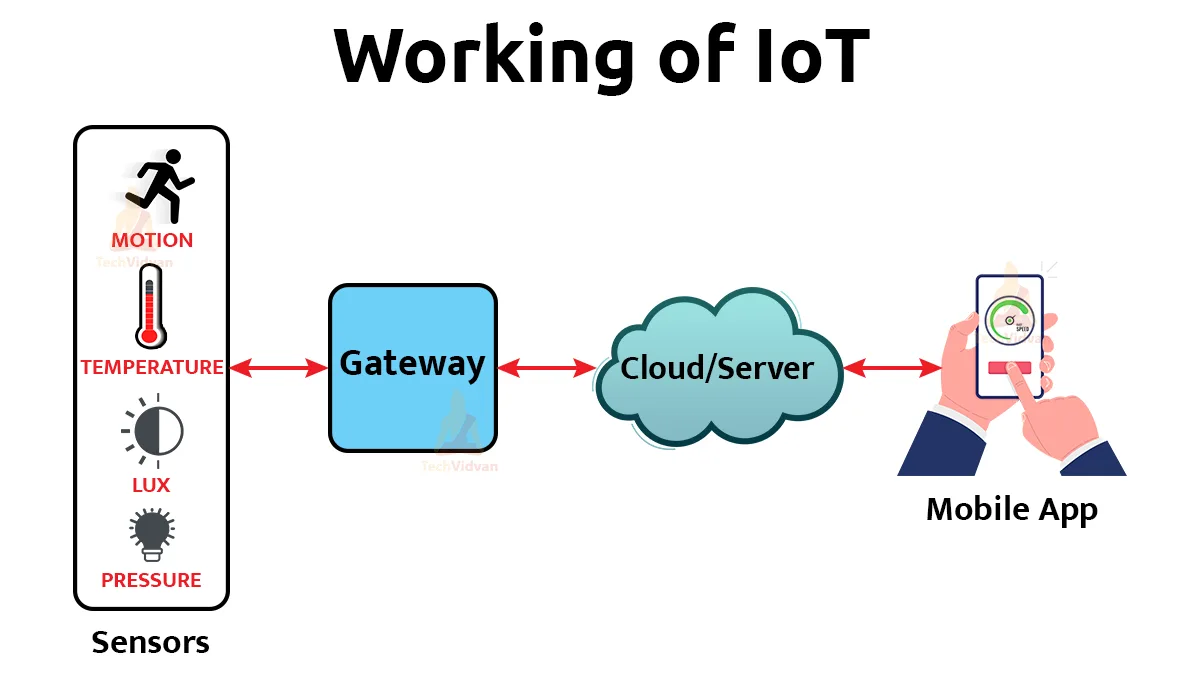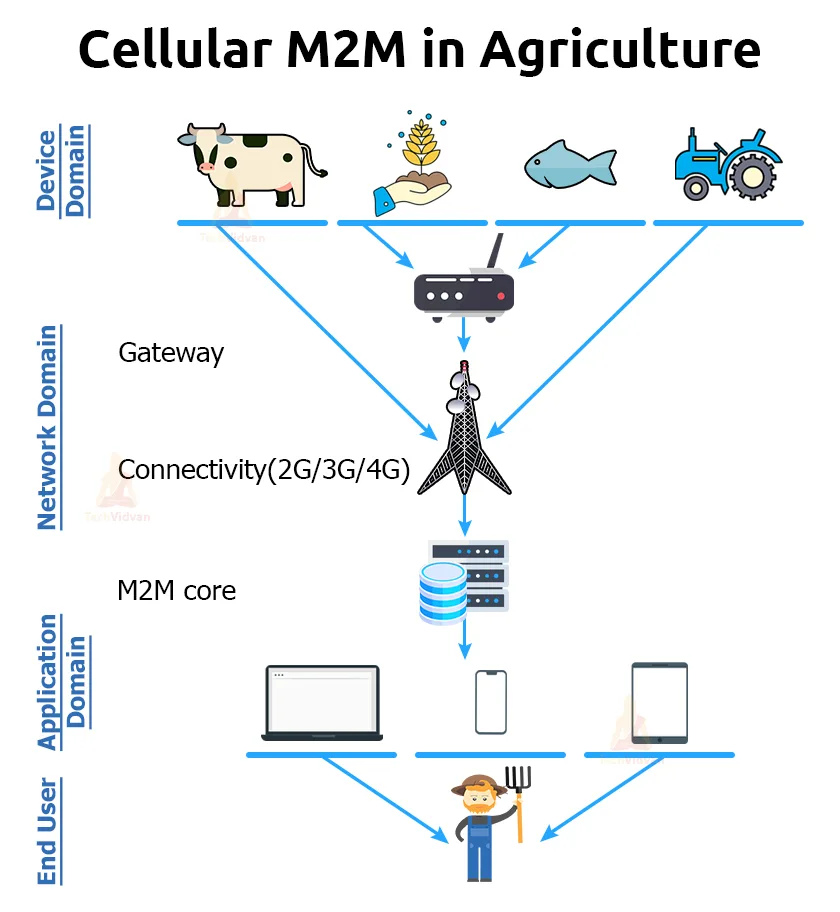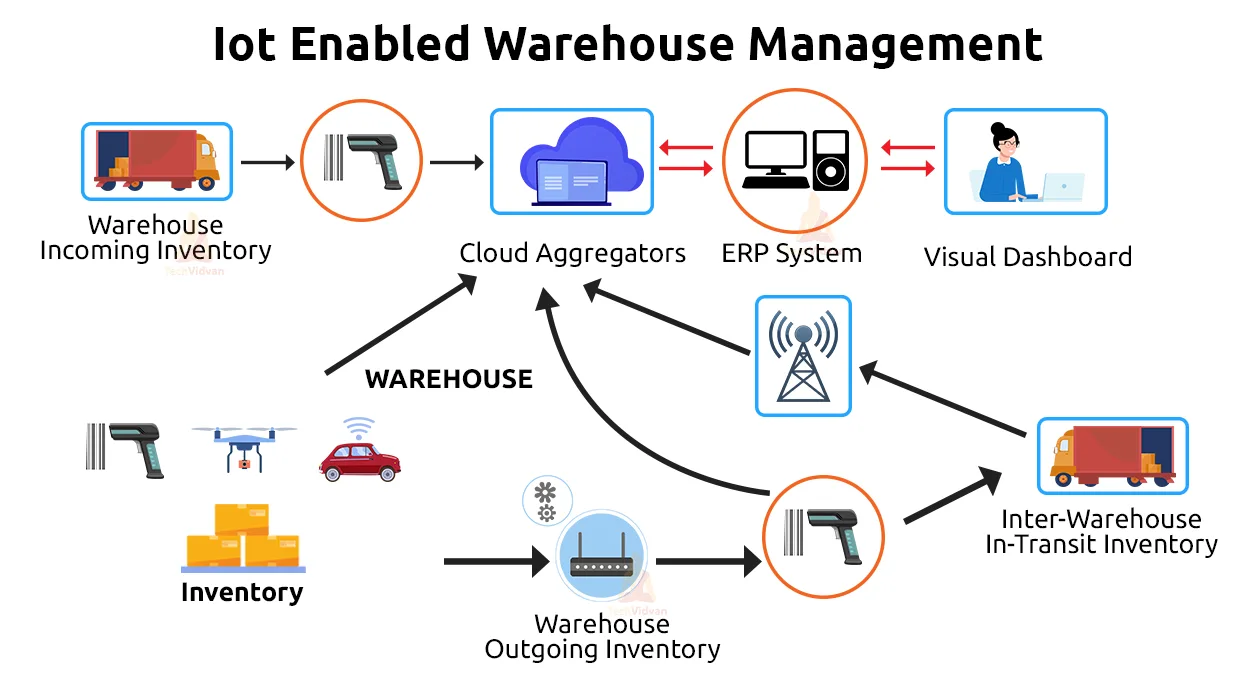How IoT Works?
The Internet of things consists of a large network of interconnected devices. These devices transfer and collect huge amounts of data about how they operate and details about the information they store. This data is sent to large cloud servers located across the globe. The cloud sends relevant instructions based on the information received.
We will look further into the working of Iot in this article. When we learn Iot, it is best to take a reference scenario into consideration and work your way through the topic with the help of an example.
How does IoT work?
As mentioned before, IoT is a giant network consisting of interconnected devices.
IoT devices have sensors embedded into them. These sensors are capable of sensing their surroundings. The devices store the information in some form of data. These devices include appliances such as mobile phones, coffee machines, microwaves, geysers, fire alarms, Air conditioners, cars and so on.
The sensors embedded in these devices constantly emit data about the surrounding and on the working information of these devices. IoT serves as a platform to dump all the data collected by these devices.
IoT platform includes cloud servers and large databases. The IoT platform acts on the data. It integrates and processes the information. Further, the platform analyses the data thoroughly to gather important details. The platform then sends back instructions based on the data provided.
Finally, the data aggregation is shared with other devices for better performance in the future. It is also done for improved user experience.
The future of IoT is bright and massive. According to a report generated by Business Insider, 24 billion IoT devices were installed in the year 2020. ITC predicts that IoT revenue will reach 300 billion dollars in the coming years. This generates large amounts of job opportunities in the technological industry and various other industries.
Components of IoT
IoT has 4 components that describe the functioning of most of the IoT systems:
1. Sensors/Devices
These devices connect with the external physical environment. They collect the data from the outside changes and store this information. A sensor senses the changes in the surroundings and notes down these changes. This property makes sensors extremely useful in IoT applications.
For example, there are sensors in your phone such as GPS which track your location and guide you to your destination. Cameras sense human movement to click pictures. Try finding out other sensors in your mobile devices
2. Connectivity
Cloud servers process the data that sensors collect. But, in order to do so, they require platforms. Connectivity is the connection among all IoT devices in any given Iot ecosystem including sensors, routers, gateways, user applications and platforms.
Connectivity allows you to take control over the entire IoT system and hence it is crucial to select the right kind of connectivity path. Wifi, Bluetooth, Zigbee, cellular networks such as LTE or 5G all offer connectivity to transmit large amounts of data.
3. Data processing
Once the entire data transmits to the platform, functions are performed on this data in order to process the data and send back necessary outputs. In other words, data analysis must take place. This step is the most important step in IoT technologies. The analysis must happen at a quick rate to provide better results.
4. User Interface
This is the final stage. This stage is in direct contact with the user and it gives the output that users see on their screen. Every IoT device has a different interface as each device has a different task or purpose to accomplish.
How does a smart car function with IoT?
Let’s use a smart car example to understand the functioning of Iot. A smart car is one that is embedded with IoT. It contains sensors that store information about the functionality of the car.
A smart car is updated with the latest technology. It includes features such as collision sensors to alert the driver, GPS and environmental control, alert services that contact the car manufacturing company when the car requires a check up.
All of these features were unimaginable and impossible a few years ago. Thanks to IoT, devices can do so much more.
Imagine you are driving your smart car to a particular destination. Smart cars have the ability to provide the shortest route to the destination and it also provides the estimated traffic and time to reach the destination.
The sensor located in your car, alerts you about your surroundings. They constantly send messages. This helps in accident control.
Smart cars have automatic temperature control embedded in them. These sensors are capable of sensing the weather outside and on the basis of the information it adjusts the temperature in the car.
In a situation where you feel dizzy and sleepy, you can activate automatic control where the car drives itself. It does this by gathering information through a network via the internet.
IoT in Farming – Smart Farming
Let us look at an example on how IoT works on an industrial scale. Thanks to smart farming, farmers now can understand and grow their crops in a much better way. This reduces cost and money.
IoT has made a huge impact in the Agriculture industry. It is because of its higher gains, lesser costs and easy management. A lot of these techniques are currently being used in farms that generate huge produce. Smaller farms are yet to be introduced with the IoT technology.
Smart farms have devices that connect to the internet and provide all kinds of real time data related to the crops. This information includes soil texture, moisture balance, pesticide levels, water levels and livestock wellness.
Other than that, IoT also controls fences, collects weather information, gathers data on the condition of livestock, ensures proper vehicle functioning and checks the electrical supply at the farm.
All this generated information enables farmers to track the health of livestock and plants and to ensure positive growth. The farmer can also send instructions through a mobile phone and check in on the crops and animals from the vicinity of his room. In case of an incident, farmers can respond much quickly and take necessary action. This reduces the time and cost by a large factor.
IoT provides information on how much pesticide a certain crop requires and it tracks livestock growth and movement. It alerts you when the sheeps are ready for lambing during spring, it alerts you on what seasonal crops to grow, it tracks your soil and water levels and so on.
IoT is fused into various agriculture sects such as sheep, grains, dairy and horticulture.
Employee monitoring system
These days, giant industries are integrating their systems with IoT technologies to provide efficient and profitable results. One way IoT is being incorporated into the business sector is through the employee monitoring system.
Face trackers, fingerprints scanner, iris scanner are few of the devices that monitor employee attendance. Companies install these devices at the entrances to monitor and track employee attendance.
Warehouse IoT
Warehouses and Godowns use IoT machinery and devices to keep a track of their product generation. With growing demands in society, production is increasing at a large scale. Using IoT in Inventory reduces time and money.
Authorities place sensors on top of devices to track their location, and to obtain any information about the product’s condition.
Summary
In the following article we understood what IoT is and how it benefits the world. We looked into the future of IoT and different IoT components. Then we understood how IoT works with example. We learn about how a smart car functions and how smart farming benefits agricultural produce. We also learnt about how IoT is helping monitor employees and products in warehouses.



